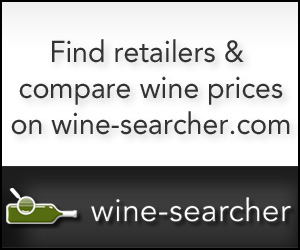Location! The old advice about real estate works for wine too. The specific location on a wine bottle label can guide us to quality … and value.
It’s no secret that wines from storied places like Bordeaux, Burgundy, Tuscany, Napa, and Sonoma earn a level of respect from wine lovers and command higher prices than do wines from less favored regions.
Substack Chat
Location, location, location! Place matters to wine quality and value. Where does your favorite wine hail from?
As I pointed out in my October 2023 column Maps matter because place matters, “Geography – the science behind maps – matters a lot in wine. Just about every wine we buy is identified not only by its grape and color but by where it came from.”
Simple rules of supply and demand seem to do their inexorable work of sorting wines by place of origin and price. Take a look at Wine-Searcher.com’s frequently updated database of The World’s Top 50 Most Expensive Wines, and you’ll find few surprises. This mouth-watering list of trophy bottles ranging in price from $6,079 to a breathtaking $226,330 won’t surprise you much with its narrow geographical range: Most hail from Bordeaux and Burgundy, plus a couple of sought-after Rhône reds, a few ancient Ports, a couple of well-aged Mosel Beerenausleses, and a single Napa Valley Cabernet cracking the bottom end of the trophy list.
Let’s be frank: I don’t have the budget or the desire to pick up anything close to those prices, even in an age when our 401Ks aren’t tanking. But I’ve been enjoying and writing about affordable wines that punch above their price weight for a long time.

Map of the Bordeaux region featuring the Médoc, with Saint-Estèphe shown near the northern end.
–Map from the Vins de Bordeaux page (in English).
One good way to approach this quest draws, again, from the world of real estate: If you can’t afford a house in the fanciest neighborhood in town, adjust your expectations and look for good values in the nice neighborhood just down the street.
It’s easy to turn this approach to wine: Can’t afford a super Tuscan or big-name Chianti Classico? Look for an affordable alternative in a simple Chianti or reds from outlying sub-regions like Maremma or Colli Senesi. A high-end Burgundy from the Cote d’Or is beyond your reach? Try a top-rated Cru Beaujolais such as a Moulin-a-Vent or Brouilly. And, if you must, exit the hallowed vineyards of Bordeaux’s Haut-Medoc in favor of well-regarded nearby appellations such as Blaye, Côtes-de-Bourg, Entre-deux-mers, and Saint-Estèphe.
Once you’ve settled on the location of your chosen alternative, you can narrow the field further by checking reviews, seeking the advice of a trusted wine merchant, and turning the bottle around to check for an importer with a winning record of quality wines.
Today’s featured wine, Chateau Sérilhan, comes from Saint-Estèphe, which doesn’t lie far north of the hallowed soil that houses four of Bordeaux’s five First Growths. It shares the same gravelly soil and faces the cooling breezes of the same Gironde river, and its fine, structured red wines use the same typical Cabernet Sauvignon, Merlot, and Cabernet Franc blends. It lies a bit farther to the north, though, just far enough to escape the high-rent district.
That probably explains why I was able to pick up a very good, already maturing Cabernet Sauvignon-Merlot blend that significantly outperforms its relatively affordable price under $30, and pocket the hypothetical savings for another day.
Since I buy all the wines I review at retail and do not accept wine samples or other gratuities from the industry, I count on the support of paid subscribers to help cover the cost of the wines I review. So, I have to reserve wines over about $20 behind a subscription paywall. If you haven’t become a full subscriber yet, I’d love to have your support. Click here for information on our paid-tier edition. Our free-to-all edition featuring a quality wine for $20 or less will return in its biweekly cycle next week.

Support The 30 Second Wine Advisor with your paid-tier subscription. For $5 per month or $50 for a year (a 17% saving), you’ll receive additional wine notes funded by your subscriptions, gain quick direct access through Substack for wine-related questions, and gain my real appreciation for your support.




